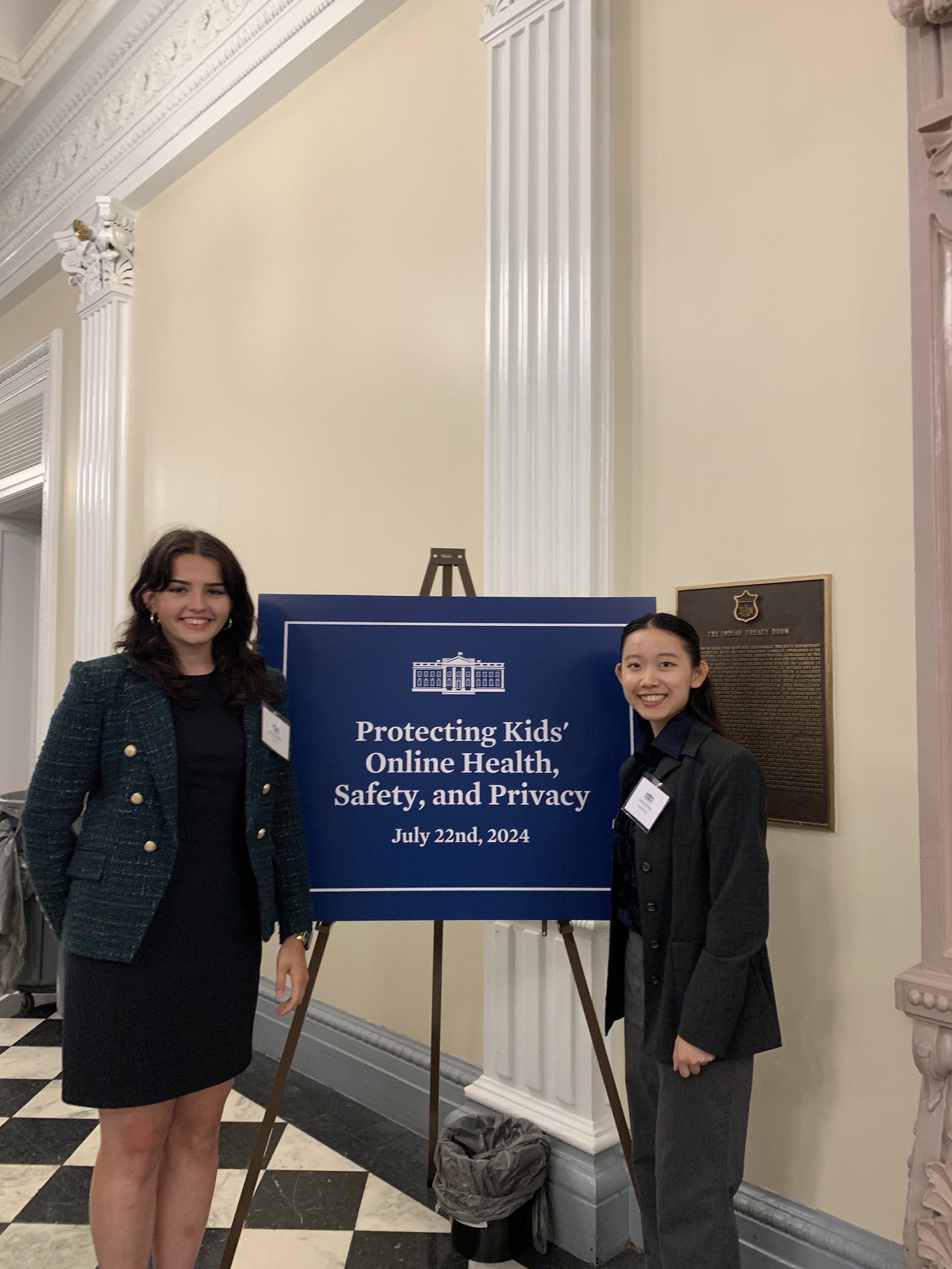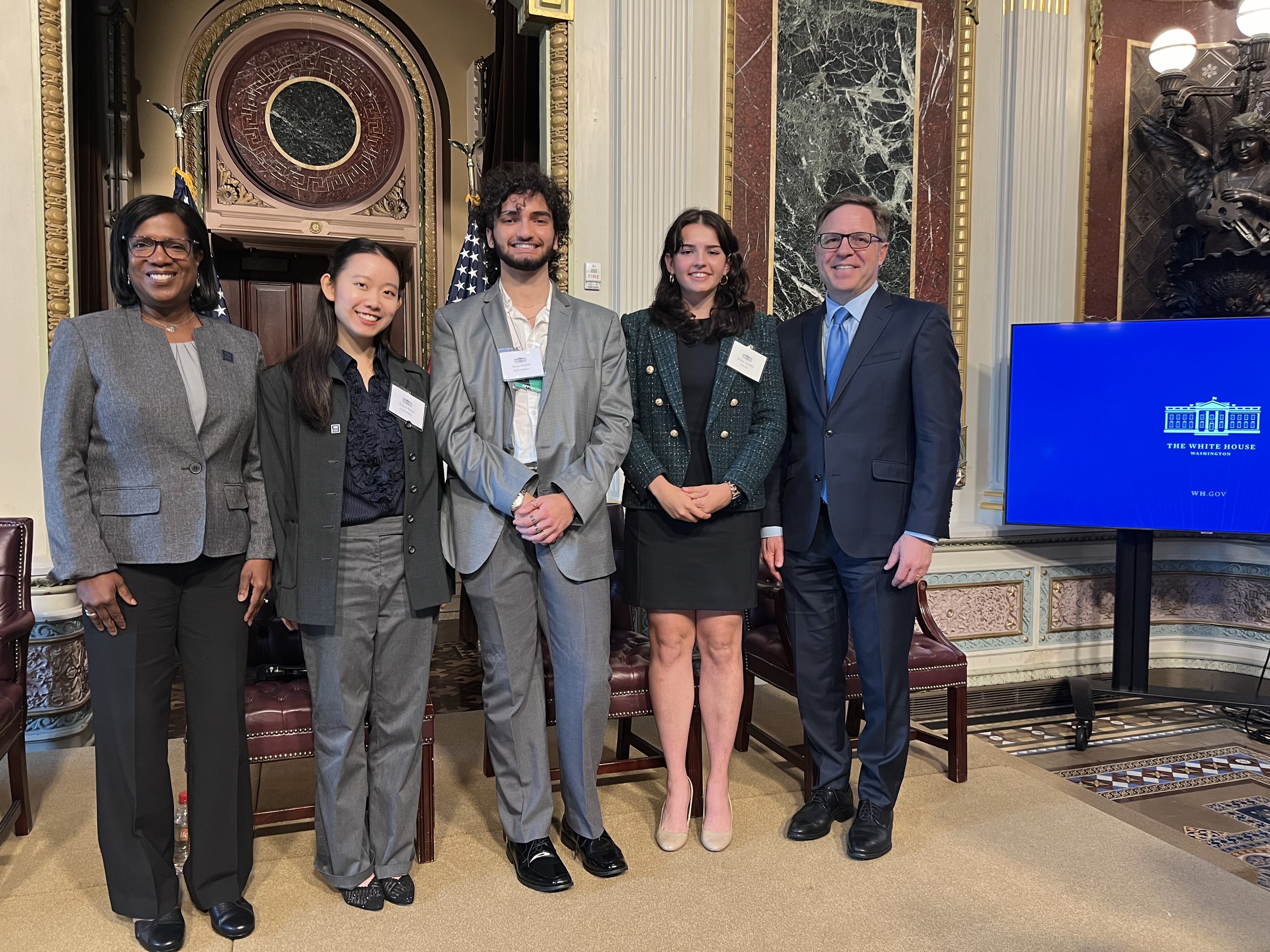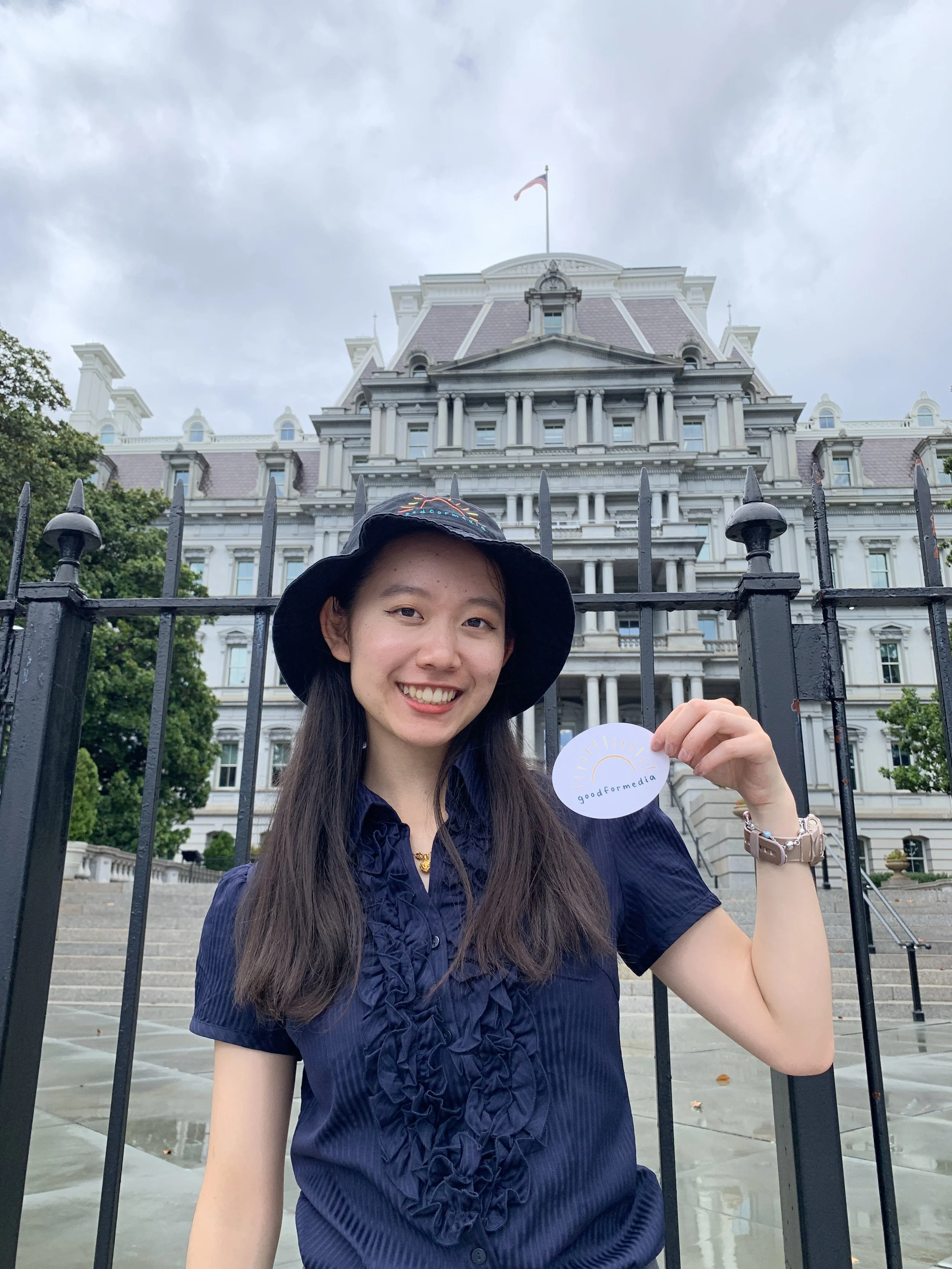#GoodforMEdia takes the White House!
By Audrey Wang
In a truly historical moment in time, there is no better time to advocate for youth online safety.
Audrey Wang and Emma Lembke standing in front of the event sign.
On July 22nd, I had the honor of representing GoodforMEdia as one of the three young advocates speaking at the White House. More specifically, we discussed our online experiences and recommendations for action. This event wrapped up numerous youth roundtables and listening sessions, including the one held at Stanford University where seven GoodforMEdia young leaders (including myself) had the opportunity of presenting youth testimonials in March. The Kids Online Health and Safety Task Force (KOHS) finalized a report and digital resources for young people and parents to amplify youth safety.
This was my first time being in the White House and it was phenomenal being in a space where so many important discussions and decisions were held. After some opening remarks by task force leaders spanning several departments and a panel with the co-chairs of the task force, it was time for our panel. One of the online resources that was developed and shared prior to our panel was conversation starters, similar to GoodforMEdia’s conversation starter cards, made for youth by youth.
From left to right: Dr. Miriam Delphin-Rittmon, Audrey Wang, Rami Zwebti, Emma Lembke, and Alan Davidson on stage after the panel.
Here are some of my main takeaways from our discussion:
We should have more compassion for our own social media use. We noticed that even as advocates, we may be sucked into the negative patterns of social media platforms. Social media was made to maximize time spent and engagement.
The design/ interface is often overlooked as a concern for harm. We should reframe the conversation in that social media is often designed to be addicting, instead of youth being addicted to social media. For example, apps may be designed for doom scrolling, or make the young person feel worse about themselves than before.
Algorithms, especially recommendation engines, should be held accountable. In our experiences, platforms may intentionally show content to people that might not enjoy it to incite a powerful emotion: hate. People tend to turn hate into engagement, whether that is through comments or shares. This opens up the possibilities for cyber bullying, which has the potential to harm adolescents the most.
Audrey Wang speaking during the youth panel.
Reflecting on this experience, it is forever an honor as a young advocate for my voice to be heard. Overall, we had a fruitful conversation about the most pressing issues surrounding the effects of social media on adolescents, while pointing out the nuances and diversity of youth online experiences. The panel was over before I knew it and the event concluded. What we need more than anything is measures in place for change, to protect the teens and tweens on the social media of tomorrow.
Audrey Wang wearing GoodforMEdia swag posing in front of the Eisenhower building.
About the author:
Audrey (she/her) is a freshman in college from the Bay Area, California. She hopes to combine her unique perspective on technology, especially algorithmic biases, from her technology background to make social media a safer place for teens. With her mental health advocacy, Audrey hopes to have conversations with youth about imposter syndrome and self worth. She also coded a platform named Affective Cookies, which inspires users to improve their mental health through inclusivity and empathy.




